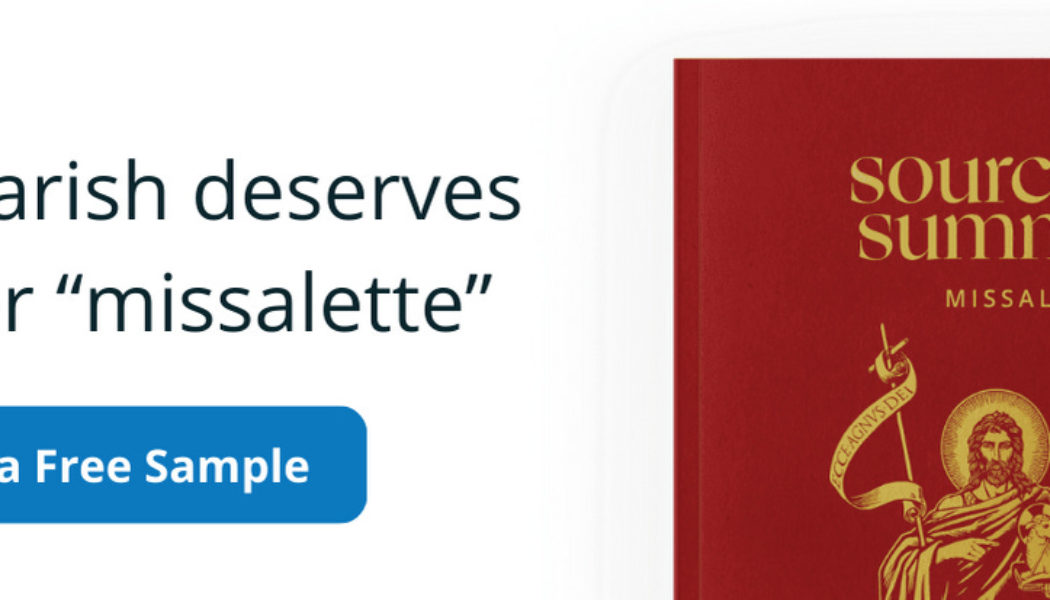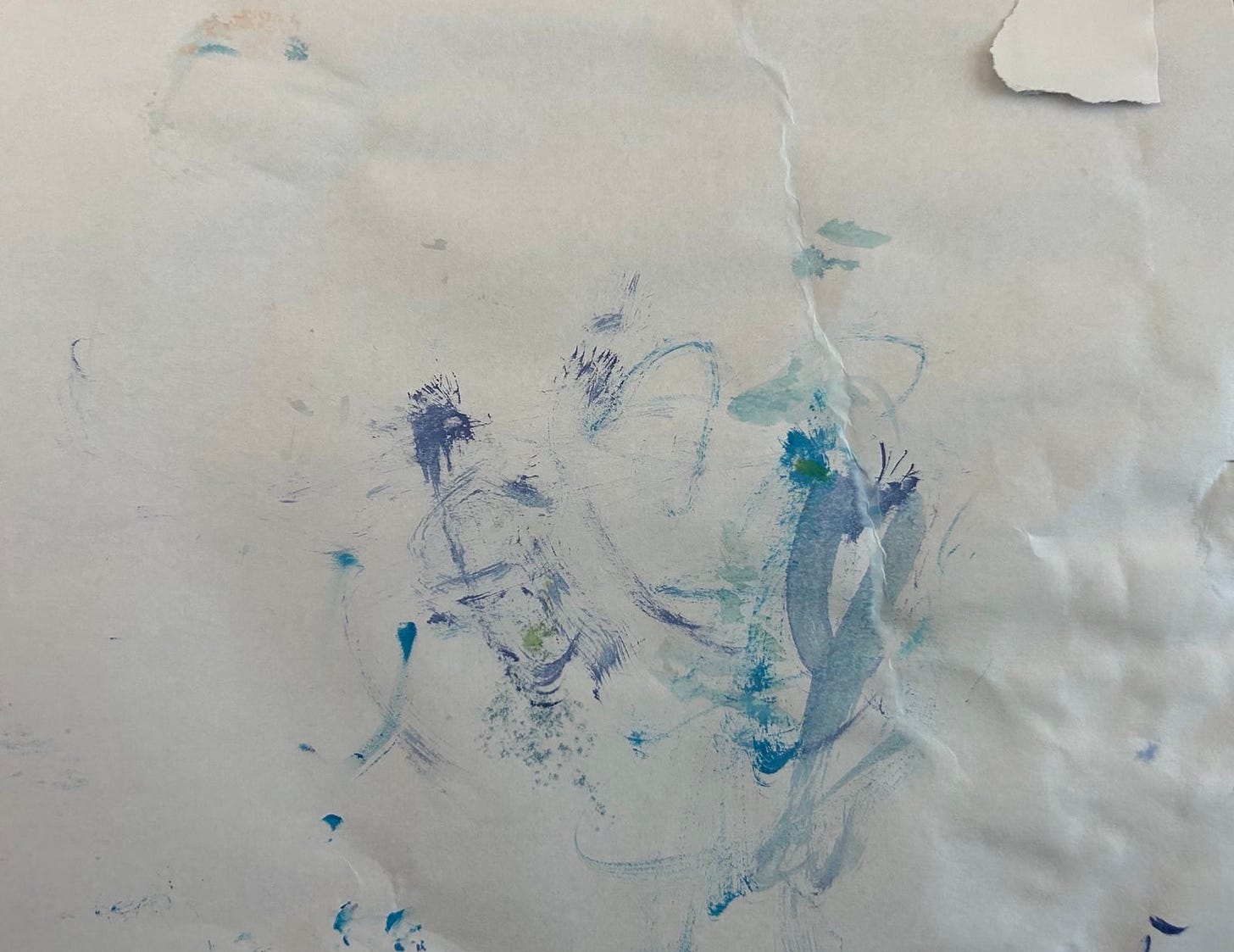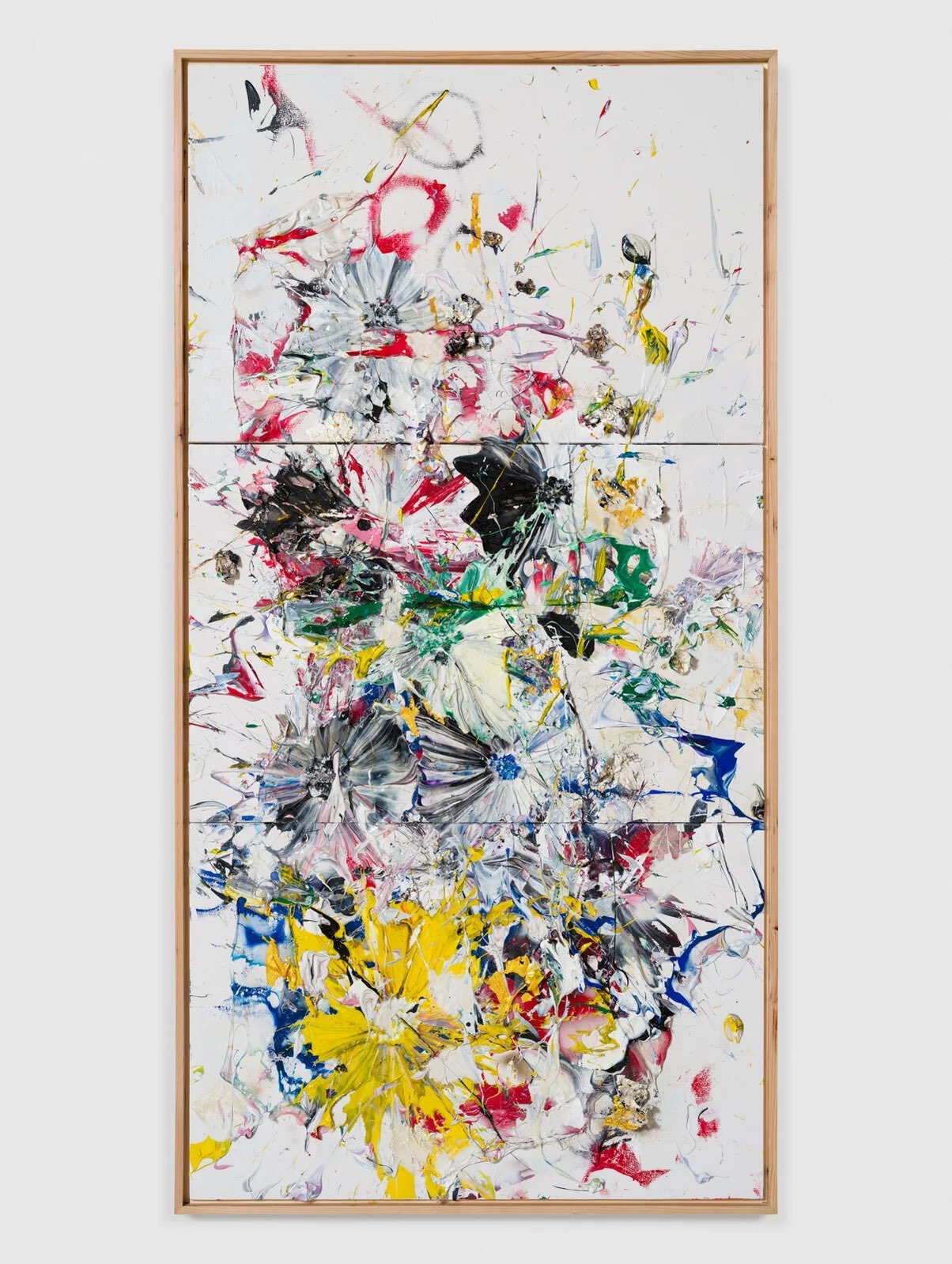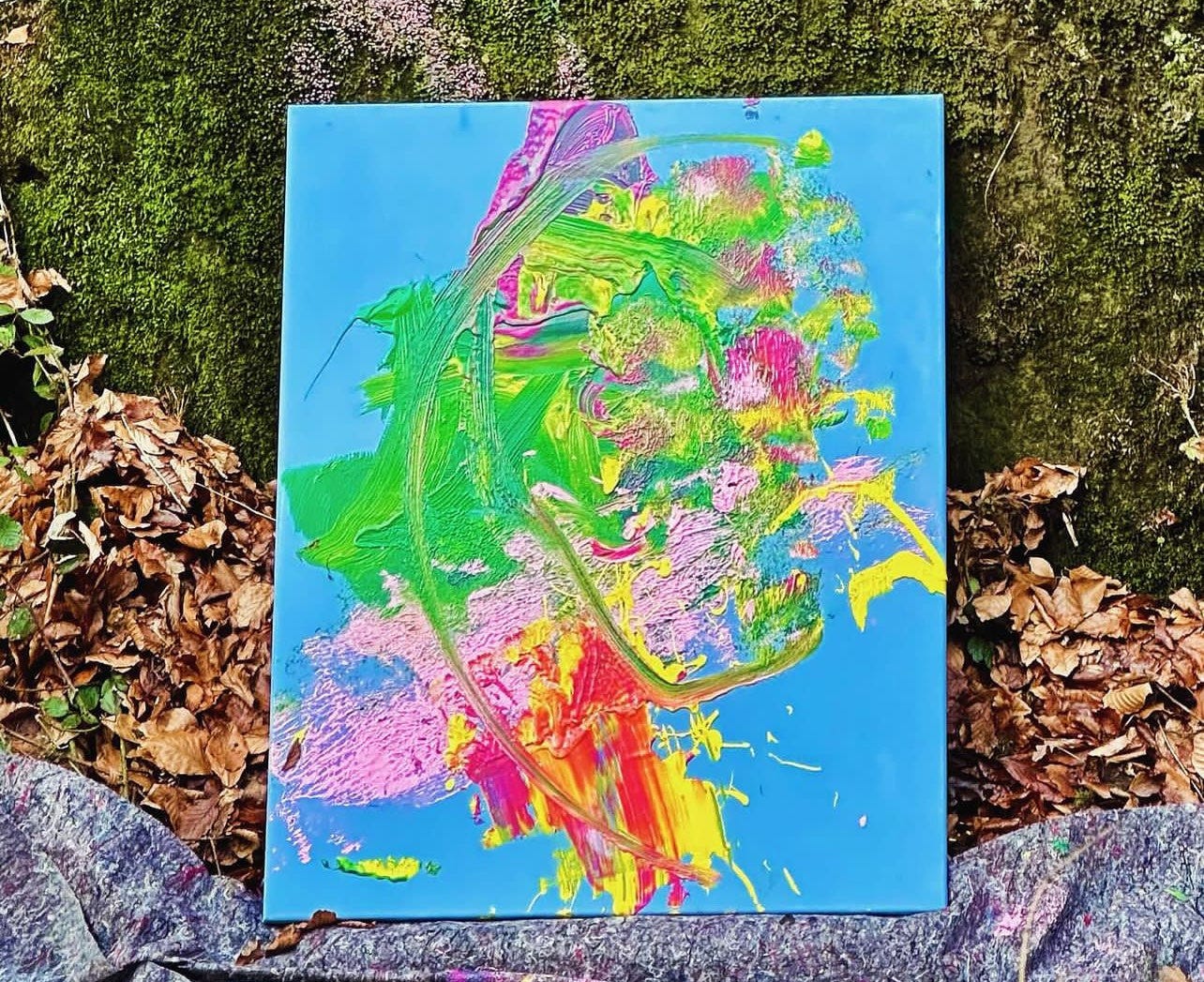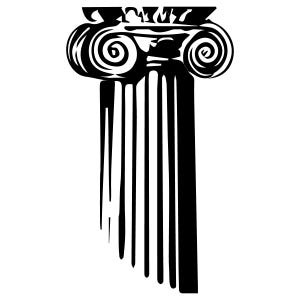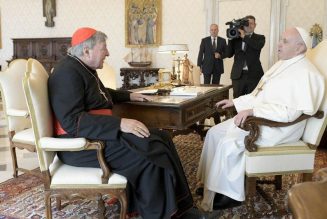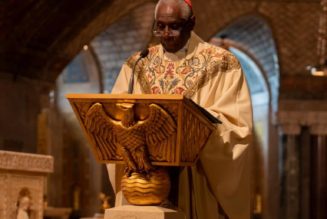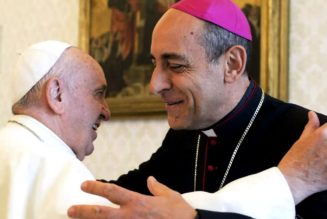Pillar subscribers can listen to Ed read this Pillar Post here: The Pillar TL;DR
Happy Friday friends,
And a very happy Feast of the Visitation to you all.
There are a lot of lessons to learn from Elizabeth’s encounter with Mary in the hill country and, like many of you I suspect, I have been lucky enough to benefit from an incredibly rich seam of teaching and preaching on this feast over the years.
It is, I think, perhaps the great sadness of our Protestant neighbors that so many of them consider a wholesale rejection of Christ’s mother and her maternal love for us to be some kind of badge of honor meant to impress her son.
I often wonder if these people have ever met a guy who loves his mom.
Of course, if they cannot see Mary, or allow themselves to come close to her consolation and aid, I need to at least consider the possibility that it’s because they’ve never met someone in the Church who, like Mary, bears Christ in them to such a degree that their reaction to it is involuntary — as it was for Elizabeth.
St. Paul says a Christian carries always in their own body the dying of Jesus, manifesting with it the true glory and reality of his resurrection, too.
I’ve met a few Protestants in my life, and offhand I cannot think of any who reported seeing the glory of the risen Lord reflected in my aspect, or that something inside them stirred for joy at my greeting.
This isn’t to compare myself with herself, obviously. But, if Mary is an image of the Church, it is surely my mission too to carry Christ within me to those I meet, and to have ready my own Magnificat, retelling the great things God has done in my life.
And if I am really living the graces of my baptism and sustained by the reality of the sacraments, surely it should, as that Japanese cleaning lady would say, “spark joy” in everyone — me first of all.
Anyway, here’s the news.
The News
The German lay group responsible for the country’s controversial “synodal way” is in a furious bate with the bishops this week.
The Central Committee of German Catholics (ZdK) issued a withering denunciation of the bishops, warning that they had “cast doubt on the extent to which they respect the central resolutions of the synodal way” and demanding, in essence, that the bishops recommit themselves to toeing the line.
What, you might ask, triggered this row — some new statement from the conference on lay governance, women’s ordination, or perhaps church blessings for same-sex unions? None of the above.
The ZdK are outraged, and implicitly threatening to walk away from their dealings with the bishops, after the conference’s permanent committee failed to approve their preferred candidate for national chaplain for boy and girl scouts.
No, seriously.
—
The St. John Paul II Shrine in Washington, D.C., has declined to answer questions about whether the shrine will cover mosaics by disgraced artist Fr. Marko Rupnik during the National Eucharistic Pilgrimage events next month.
Rupnik, who was expelled from the Jesuit order last year, has been accused of sexually abusing some 30 religious sisters. Some of the allegations involve claims of abuse specifically in the context of creating his works of art.
The shrine will serve as a stop on a national pilgrimage route early next month.
The shrine’s prominent role in the pilgrimage events comes after months of controversy over the continued presence of Rupnik’s artwork at the site.
In December 2022, the Knights of Columbus said it was “reconsidering the place” of Rupnik’s work in the organization’s chapels. The Knights have already removed Rupnik’s art from their evangelization booklets and other published materials.
In April, a Knights’ council in Washington, D.C., passed a resolution calling for Rupnik’s art to be removed from the John Paul II Shrine.
The resolution called Rupnik’s mosaics “repugnant to faith, morals, and Christian piety … due to the fact that Fr. Rupnik reportedly perpetrated his sexual abuse through the creation of his artwork.”
It asked Knights leadership to immediately cover the artwork, and to make plans to replace it.
—
A record number of French armed forces personnel were baptized Saturday during the annual International Military Pilgrimage to Lourdes.
Nearly 180 catechumens from the four branches of the French military — the Army, Navy, Air and Space Force (France has a Space Force — who knew?), and National Gendarmerie — were baptized May 25 in the Basilica of St. Pius X, the largest church in the Sanctuary of Our Lady of Lourdes.
Many of the baptisms were performed by the Vatican’s “foreign minister” Archbishop Paul Richard Gallagher, who presided over the French armed forces pilgrimage.
I know what you’re thinking: The ranking diplomatic minister of a foreign power, and Englishman no less, is baptizing swathes of the armed forces of a secular state constitutionally committed to laïcité?
—
A Pennsylvania priest has an upcoming court date over felony theft charges that he spent (stole) more than $40,000 in parish funds in cell phone games.
The cops identified $43,397 of those charges were incurred on the parish credit card.
The priest has insisted it was a mistake, that the parish credit card was linked to his Apple account to pay for office software and he’d mistakenly used it to fuel his (admittedly considerable) enthusiasm for cell phone video games.
He is not, Kozak explained, a “details guy,” and he has made efforts to repay the money. He is also seeking therapy for addictive tendencies, which seem to have begun shortly after a life-threatening car accident in 2016.
It is, in many respects, a very sad story. And as Robert Warren, a professor of accounting at Radford University and a former IRS investigator, told us, it also emphasizes the need for serious internal accounting and auditing procedures in parishes and other Church institutions.
Warren also noted that Kozak is unlikely to face prison, both because he has been very forthcoming with investigators and because “his behavior pales in comparison to his contemporaries.”
People, including us here at The Pillar, have been warning for years that financial scandals in the Church are the next big issue that will have to be addressed. But it’s not enough to see them coming, or report them as they happen. We need a discussion about what can be done to head them off.
That’s why we talk to people like Rob Warren.
—
Venezuela has a new apostolic nuncio. Earlier this month, the Vatican announced it was sending Archbishop Alberto Ortega Martín to be their new man in Caracas.
The nutshell of it is: Ortega Martín is walking into a minefield.
The country is headed into an already hotly contested presidential election — the last one ended in an illegal standoff with Nicolás Maduro clinging to power. Meanwhile, the Vatican has made frequent attempts to broker talks between the regime and the political opposition, to no avail.
Also, a Vatican concordat grants the government effective veto power over major episcopal appointments, which has left the country with a serious backlog of bishops to be named to major sees.
All this would be bad enough. But outside of the cities, Edgar notes, whole swathes of the countryside have been effectively ceded to criminal gangs and paramilitary groups, with the Church left as often the only honest broker between them, the local community, and the government. And the result, Edgar warns, is likely to be the increased targeting of priests.
This is a serious report, seriously worthy of your attention.
The Source & Summit Missal is designed to help your parish elevate the liturgy, increase reverence, and form missionary disciples along the way of beauty. Put radiant resources in the hands of your parishioners, along with easy-to-use tools that open up the Church’s liturgical and musical riches into the hands of your musicians.
Another way
The United States Conference of Catholic Bishops released on Tuesday its annual independent statistical report on abuse allegations in the Church in the U.S.
The bishops have poured resources into compensating survivors and into future abuse prevention measures, and the signs are that it is working.
We should also, I think, pause annually to affirm the welcome transparency this report embodies every year. The Church in America’s historical record on this score is terrible, and an independent national audit of the current state of affairs is nothing to be taken for granted.
This isn’t to say things are all fine now, they are not. Or that constant vigilance isn’t necessary. Of course it is. But the report does show that policies and procedures brought in over the last two decades have had real, measurable effects.
That said, there remain serious problems – cultural and procedural – with how they are implemented.
I talk a lot, I know, about the habitual infringement of the due process rights of accused clerics in the post-Spotlight world, and the double standard in how clerical abuse accusations are handled with priests versus their bishops.
But just as important, I think, is for bishops to take personal accountability for making “zero-tolerance” a reality and not just an aspirational slogan.
This isn’t just about owning mistakes.
Priests report feeling like they are seen as expendable resources by chanceries, and liabilities by their bishops. Often, I find, it is easy for tough, sometimes downright harsh, and unpopular decisions to be communicated with statements “from the diocese” and presented as the kind of passive, automatic results of a policy or process in which the bishop has no real agency.
But there is another way.
What happened was this: a parish cemetery employee was arrested for the sexual assault of a minor. Not on the job or in any way related to the parish. But after his arrest it emerged that he had a lengthy criminal record for indecency crimes — none of which were noted in his personnel file.
In the diocese, every parish has a safe environment coordinator who, with the pastor, is required to do a full background check on every hire. In this case, it either wasn’t done or was deliberately left out of the file — which the bishop has flagged as a possible “conspiracy to conceal the criminal background” of the employee.
The pastor was forced to resign because he signed a statement attesting to having personally eyeballed the background checks for his parish staff, which he clearly didn’t do. As it happens, the pastor in question is also one of the more popular priests in the diocese.
So far, so “zero tolerance.” But what merits special note is this: Bishop Kulick didn’t have his comms team put out a statement acknowledging the situation and stating simply what had been done.
Instead, he recorded a personal video message saying he was “outraged” and “beyond disappointed” with what had gone on in the parish and gave every indication this wasn’t just the approved rhetoric. The bishop personally owned every step of the decision-making process in the diocesan response.
He noted that the priest had admitted to signing a declaration that clearly wasn’t true about his personnel files, which is why he had to resign. But that wasn’t the end of things — the bishop said he was opening a full canonical process on charges of “culpable negligence” as well as referring the matter to county cops, even though, he said, people were going to be upset on behalf of a beloved parish priest.
“As a brother priest, I love him, too,” the bishop said, “I am sure many will criticize me for this decision… But I have a responsibility to the people of this diocese.”
“I will not hide our mistakes. And I will root out any and all potential risks to the safety of children… Someday, in front of our maker, like each of us, I will be judged by the actions I take on this earth. I have no doubt this is the right decision.”
He added that he’d ordered a total audit of all diocesan employee records to be completed within a week.
Everyone can have their own opinion about whether Bishop Kulick is right on the money with his actions, or going overboard — he certainly has his.
But what I think really matters here is this: This is what zero tolerance looks like when a bishop combines it with real transparency, a commitment to legal processes (civil and canonical), and taking personal responsibility for making it happen.
That kind of leadership is still not universal at the diocesan level — and it simply doesn’t exist at all above that.
We can have all the norms and legal provisions and permissions in the world aimed at “zero tolerance,” but transparency, respect for due processes, and personal accountability are creatures of a culture of leadership.
Cultures change, and new ones become the norm, though slow change led by individual examples, and I think we should praise those examples where we see them.
On genius
Yesterday was my daughter’s last day of the school year.
She’s in Montessori two days a week, so it isn’t exactly the end of a grueling academic calendar for her, but it was still time to clear out her locker, which meant bringing home assorted paintings and other putative objets d’art created by her over the weeks.
I’m still a relatively new dad, so I leafed eagerly through them for something to tack on the refrigerator in the approved manner, and with an outside hope of something substantial enough to merit permanent display in my office — as a nostalgia piece, obviously, not on its objective merits.
This was easily the pick of the bunch, for reasons which I am sure explain themselves.
It’s a sparse piece I grant you, but I think its barrenness and cold color palette speak to the bleakness of a two-year-old’s struggle to master language, and the potty.
Note the strong concentration of forms in the lower center of the canvas, at once huddled and lost amid the wider world — but searching outward.
I would like to tell you more about Untitled’s composition and artistic theory, indeed I want to know more about it myself.
Is it abstract art, strictly speaking, as defined by Rudolph Arhiem to be the use of “shape, form, color and line to create a composition which may exist with a degree of independence from visual references in the world”?
Or is my daughter a budding practitioner of pure nonrepresentationalism, which rejects entirely any cues from the physical world?
I cannot say for sure.
When I asked her about the painting, she laughed hysterically and left the room. Which, to be fair, is what I did when I first encountered the work of Mark Rothko on a high school trip to the Tate Modern in London.
Now, don’t get me wrong, I am not saying you can’t like or appreciate modern art. You can. I do.
I mean it.
As a younger man, I could tell you with total sincerity why I really liked some stuff from Kandinsky’s Blue Rider and Bauhaus phases, but thought his whole “Great Synthesis” period seemed totally contrived.
Stop it, I’m being serious.
I find some of Jackson Pollock’s work to be genuinely visually engrossing, though his legend as an avatar of American iconoclastic independence is a marketing fiction dreamt up by the CIA as Cold War propaganda.
And I sincerely think Zhou Yinghua (aka Mr Chow)’s Wildflowers are both beautiful and technically brilliant — maybe even worth the $60 large asking price if that’s the level you roll at, who knows.
Not everything has to be a landscape or a bowl of fruit and there’s nothing wrong with just appreciating the look of color and shape — in the same way you can like both the Beach Boys and Miles Davis.
And it makes total sense to me that this aesthetic appreciation is heightened (or obliterated) by the painter’s intuitive understanding and respect for things our brains are hardwired to like, such as complementarity of colors, balance, form, flow, and so on.
Things go awry, though, when people write a bunch of onanistic, lofty-sounding tosh to justify a whole cottage industry of pseudo-academic interpretation of what is self-evidently just some colors and shapes that may or may not relate to something identifiable.
Those people are talking nonsense, as was made clear in the Knoedler Gallery forgery scandal, in which one of New York City’s oldest and most fashionable galleries was conned into selling some $80 million worth of forged art credited to the biggest names in abstract expressionism.
For me, the standout moment in the Knoedler scandal was when they fenced a supposedly newly-discovered “original” painting by Rothko, who was himself easily the biggest literal bullshit artist of the abstract movement.
It’s not just that they sold the painting, which was actually done by Pei-Shen Qian, a math professor and art forger working out of a garage in Queens, for more than $8 million — it’s that “serious experts” argued unanimously for its authenticity and then fought among themselves over which way up the thing was supposed to hang, complete with lengthy expositions on the “theory” of Rothko’s work.
All this to say, I think the enjoyment of abstract art is fine. And I am even all for paying for examples of it if you want. But inflating the price to account for largely confected rationales about the operating genius behind the work is just a great way for mountebanks and poseurs to pass money around, and most of the time even they can’t really tell what they are looking at.
It’s all hype. With pure abstraction there is little substantive difference between the work of a genius and the daubs of a two-year-old (including my own) except good quality materials and a willingness to keep chucking paint at canvas until someone decides it’s worth something — or it becomes fashionable.
Consider the German abstract artist Laurent Schwarz, whose work is lighting up the scene just now, attracting six-figure bids from around the world.
Schwarz’s work is being hailed as genius, and he himself as a master of the form of abstract expressionism (meaning the work is rooted in discernible shapes and forms) and a fountain of creativity, turning out pieces at an incredible rate.
New York galleries are lining up to offer him display space.
The thing is, Laurent is my daughter’s age. He’s a two-and-a-half-year-old Bavarian toddler who likes playing with acrylic paints and making a mess, like any other toddler, including my own, if you give her the chance.
While he’s being called a prodigy, I think it’s obvious this is nonsense. Mozart was a prodigy — and you can discern the technical aspects of his childhood works: form, meter, development, and expression of a theme, technical ability, and above all intention.
Point to any of that for me, if you can, in The Dinosaur.
You can’t of course, because it isn’t there. What is there is a bunch of mutually reinforcing claptrap meant to lend intellectual profundity to nice bright colors on a canvas — which, again, can be very appealing on their own terms.
But the only difference between Laurent and my daughter, I would wager, is the relative tolerance for mess of their parents. And a successful Instagram account.
All this to say, I might be investing in some canvas and oils. I don’t know if there is room for two abstract geniuses in the art world. But I’ll keep Untitled in a safe place, in the event it becomes a priceless early example of her work.
See you next week,
Ed. Condon
Editor
The Pillar
The Source & Summit Missal is designed to help your parish elevate the liturgy, increase reverence, and form missionary disciples along the way of beauty. Put radiant resources in the hands of your parishioners, along with easy-to-use tools that open up the Church’s liturgical and musical riches into the hands of your musicians.
Comments 23
Services Marketplace – Listings, Bookings & Reviews
